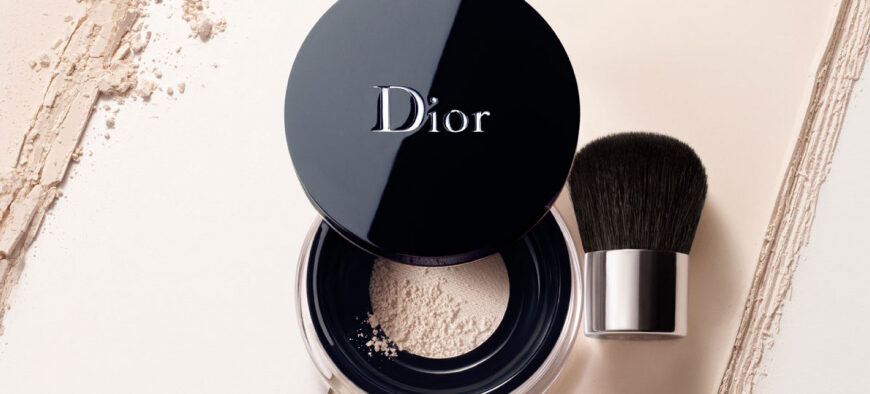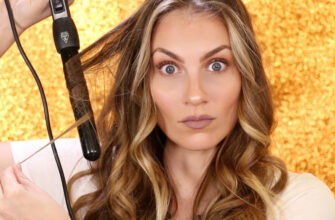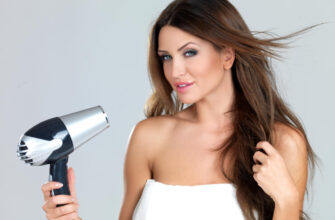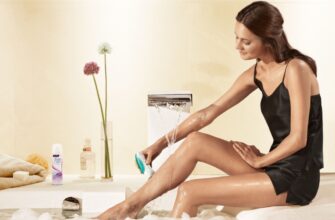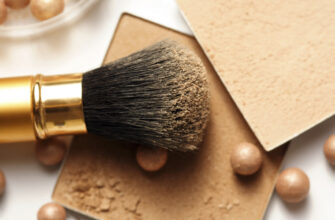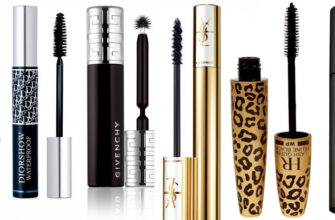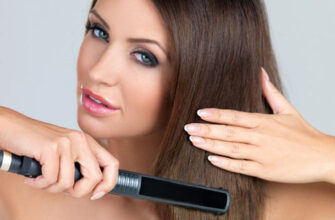The abundance of proposals for decorative cosmetics is not surprising, however, it makes you forget about proven methods of smoothing your face tone. Powder is a compact and convenient tool that instantly gives an even complexion to your face. Let's find out how to choose the right powder for you?
Universal composition

First you need to debunk a couple of persistent myths. Firstly, the powder does not clog pores. Such a statement made sense in the 18th century, when the composition included 'heavy' components:
-
Wheat flour;
-
crushed rice dust;
-
potato starch;
-
lead and arsenic;
-
ground ocher;
-
White clay;
-
shredded beans.
Several components were downright harmful to the health and condition of the skin. Do not forget that the powder was used to hide the traces of pockmarks, so they applied it to the face in huge quantities, in several layers. The mask effect was predefined. The whiteness and smoothness of the epidermis, over time, turned into a banal poisoning of the body.
Secondly, the powder does not expand pores. More precisely, modern powder does not do this. Flour, rice and wheat, mixed with the sebaceous secretions of the skin, produced this depressing effect. However, the modern composition of the powder differs not only in the ingredients, but also in the effect. Components of today's powders:
-
talc is a naturally occurring mineral. Differs in deodorant effect. It contains oxides of magnesium, iron and silicon, which moisturize the skin and protect against UV radiation;
-
white clay (kaolin) is a unique ingredient, the small particles of which absorb and retain toxins, gases and poisons that attack the skin from the external environment. It absorbs well and blocks viruses and bacteria, preventing their reproduction on the skin.
-
zinc oxide – the main filter against exposure to solar UV rays;
-
dyes of natural and synthetic origin, allowing you to create a wide palette of the desired shades.
The list of its advantages is great:
-
provides drying of the skin;
-
whitening of the face;
-
relieves irritation;
-
heals microtrauma;
-
absorbs sebum;
-
narrows pores;
exhibits antiseptic and abrasive properties (gentle exfoliation even on skin damaged by acne and inflammation).
Each manufacturer adds, to the base ingredients mentioned, unique formulas consisting of oils, vitamins, and fragrances.
The main types of cosmetic powder

Cosmetics manufacturers offer many types of face powders. You must choose your option in advance. Types of powders that brand companies offer:
loose powder is used for the finishing touches of finished makeup. Apply over the foundation to even out the tone. Cannot hide deep expression lines and obvious skin imperfections;
compressed compact powder with similar properties;
mineral powder, with ideal masking qualities, and consisting of other components:
-
titanium dioxide – an inert white pigment;
-
zinc oxide – as a UV filter;
-
aluminosilicates – for light reflection;
-
iron oxides – to create tone;
-
semiprecious minerals – for thin coverage and creation of 'live' zones on the face;
a cream-powder that hides fine wrinkles and redness, with a pleasant creamy texture;
glitters – a decorative evening option, with the addition of sparkles;
highlighters – creating abrupt transitions, and the necessary accents (they are rarely used in everyday household life, since they are professional cosmetics from acting dressing rooms);
baked powders with a creamy structure. A distinctive feature is a long stay on the skin, without visible signs of absorption or abrasion;
silicone gel powders – perfectly smooth the surface of the skin, closing grooves with wrinkles and other irregularities;
pigment powders. Professional option for hiding visual defects. A yellow, purple, green shade must be applied pointwise, after which a loose or compact pressed powder must be applied;
transparent – these are those that will suit the youngest women of fashion, due to the thin coating. But they do not hide the flaws, but only prevent the formation of oily and shiny areas in the T-shaped zone;
powdery balls of different shades – this option is good for its versatility. Apply it only with a wide and thick brush. By mixing shades, a tone is obtained that mimics the natural skin color, but without defects, scratches, acne and acne. In addition to choosing the right shade, such a powder reflects light, creates an even 'long-lasting' tone;
powder-shimmer. These products in several tones help to create an evening dazzling (shiny) makeup. With their help, the contours of the face are modeled.
Makeup artists advise you to have at least 4 powders in your cosmetic bag:
-
bronzer – suitable for the summer period, as it creates the effect of an even tan. Ideally hides many unnecessary nuances, but you need to apply carefully so that there is no sharp transition line;
-
pearlescent – to give shine to evening makeup. Visually add shine and freshness, but only under artificial lighting;
-
transparent – for use in emergency situations, without emphasis on the crossing line;
-
matte – for daily use, it will provide a velvet even tone throughout the day.
Choice of powder by skin type
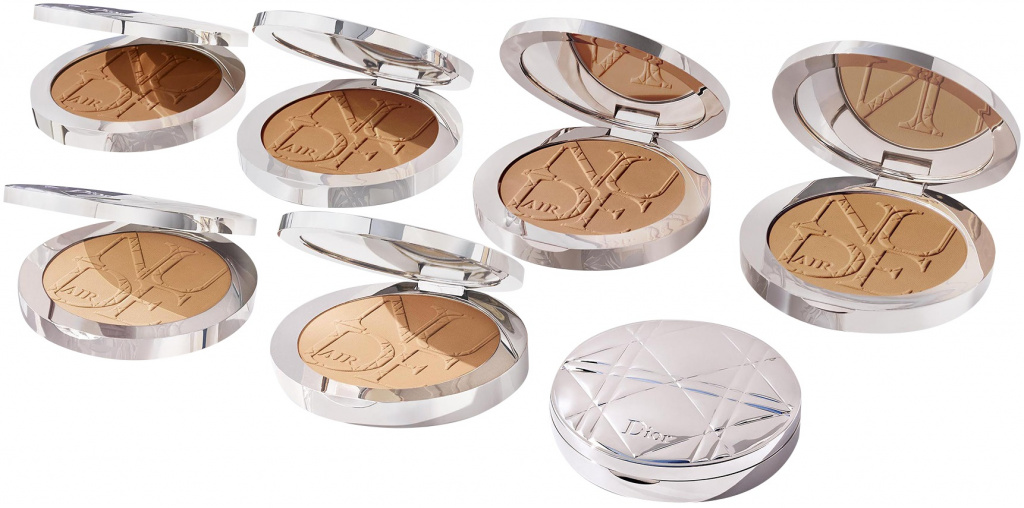
It is easy to choose a powder that matches the tone. Apply the tester to your wrist and notice how it looks under artificial light and in natural daylight. The difference between powder, skin, or the usual foundation should not exceed half the tone. An important factor and type of epidermis.
-
for oily skin, a matte powder saturated with salicylic acid is suitable to eliminate shine, various irritations, acne and blackheads. It is desirable that the composition contains tea tree oil – an excellent antiseptic and regulator of sebum secretion;
-
For dry skin, choose a compact or creamy texture for extra hydration and protection, and cell nourishment. When choosing a loose powder, you will have to purchase a moisturizing cream base;
-
for combination skin, the best option is a creamy texture and phyto-powders (with natural extracts from plants and a microcrystalline base);
-
for problematic epidermis – a mineral powdery composition. First, it is an excellent concealer. Second, the skin continues to breathe and heal even under makeup. Thirdly, the skin is not injured. Remember: the cream-powder in this case will only harm, since the oils will not let the dead surface cells peel off;
-
for sensitive skin – a powder based on mineral components, as well as containing silicone. Silicone cream can be applied before dusting (that is, purchased separately), or use a compact or loose consistency. Check that the composition contains more phyto-components, and less – chemically synthesized trace elements.
In summer, it is better to use a powdery product with protective functions from UV radiation. Matting cream-powder and a mineral complex with light reflection are also suitable.
Conclusion
You will have to choose the powder yourself, but you should not skimp on the beauty and appearance of the skin. Remember: there is no general tone or color marking, so each manufacturer's powder has a unique shade. The tonal base must be taken of the same brand as the powder, then you can get in one tone. When choosing, be guided by your own preferences and capabilities. Use our tips, then the skin will really shine, look healthy and well-groomed.
In the following articles, our experts will tell you how to choose a self-tanner and the secrets of choosing a perfume with pheromones.
Attention! This material is the subjective opinion of the authors of the project and is not a purchase guide.

